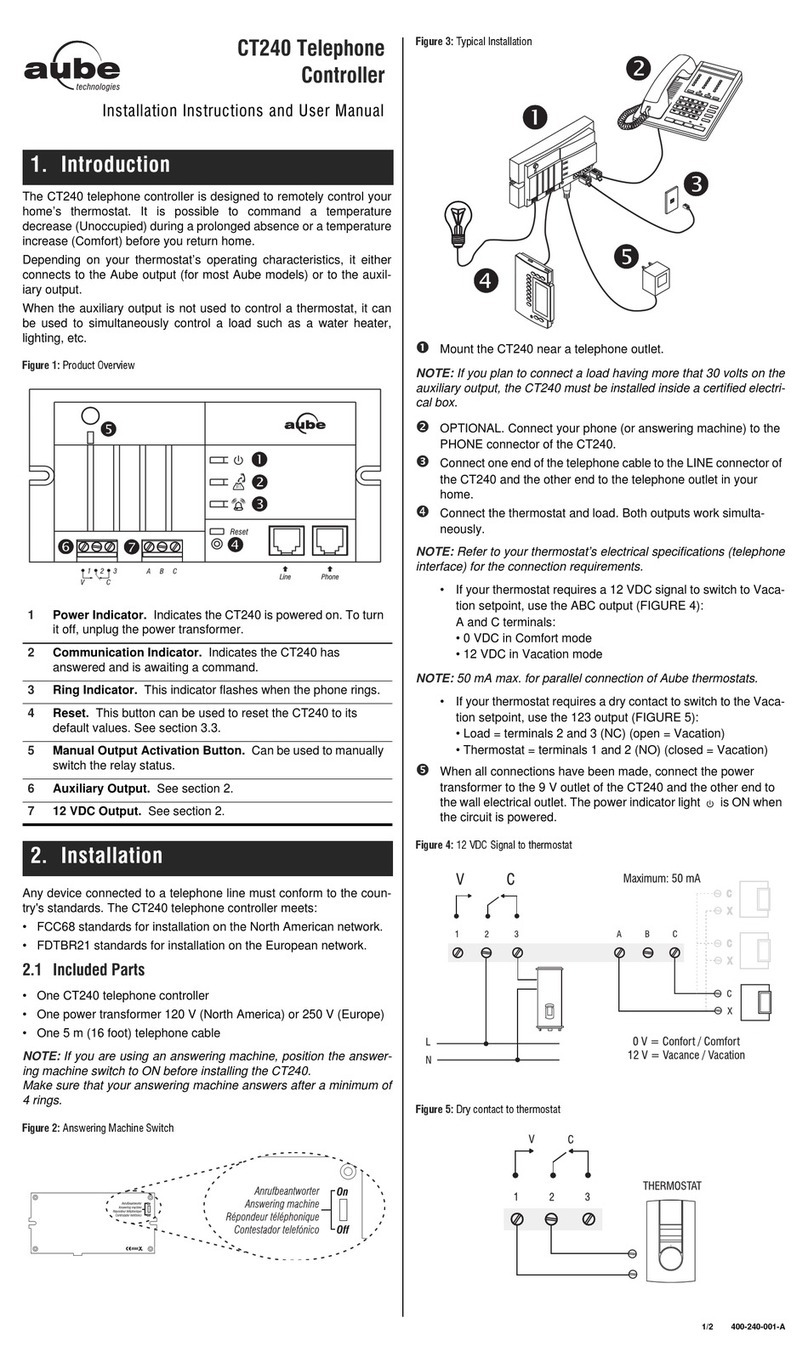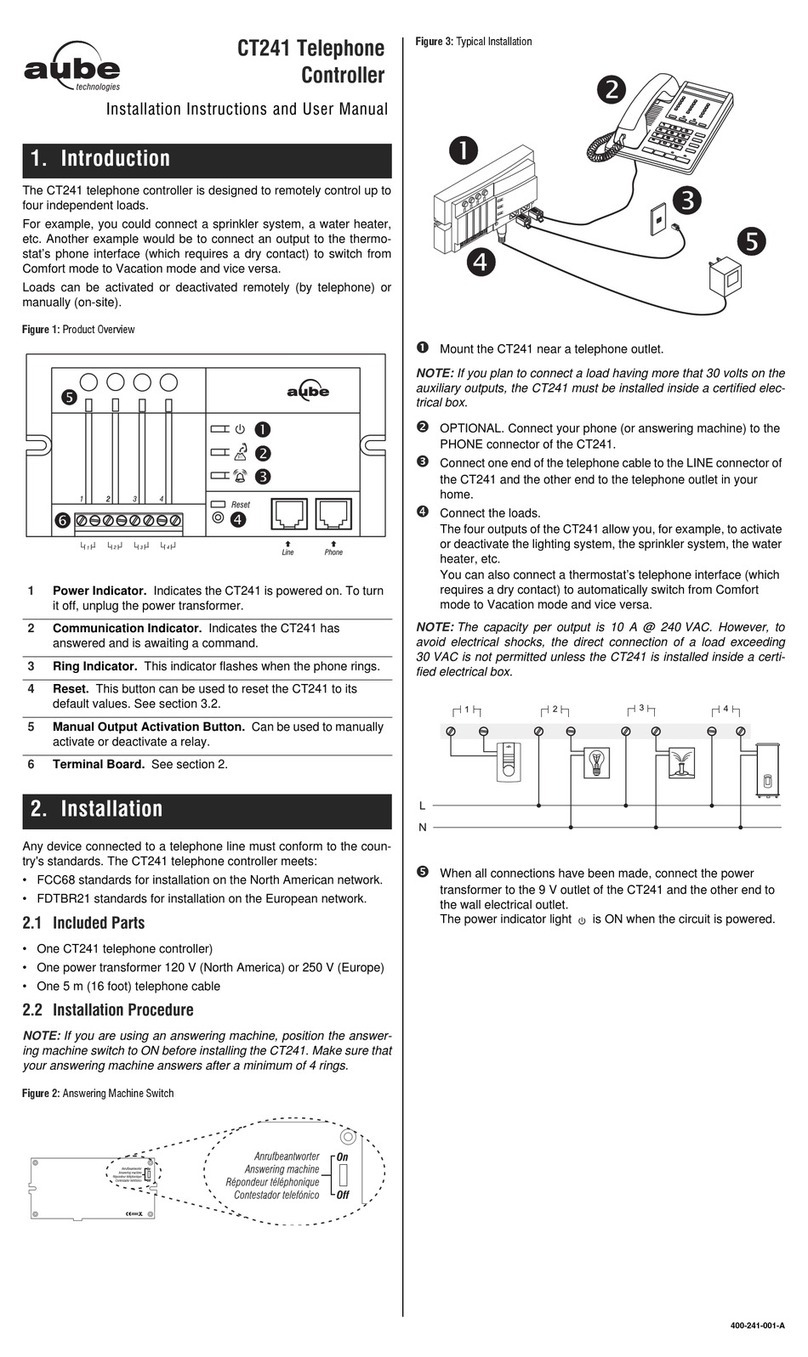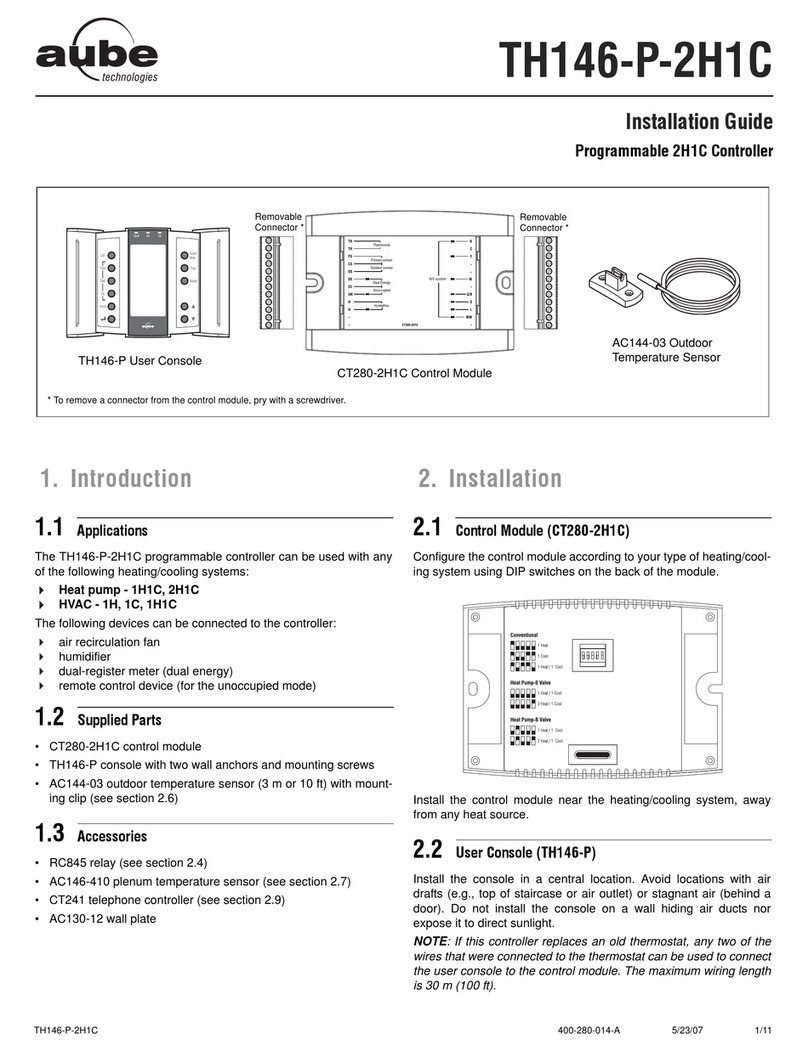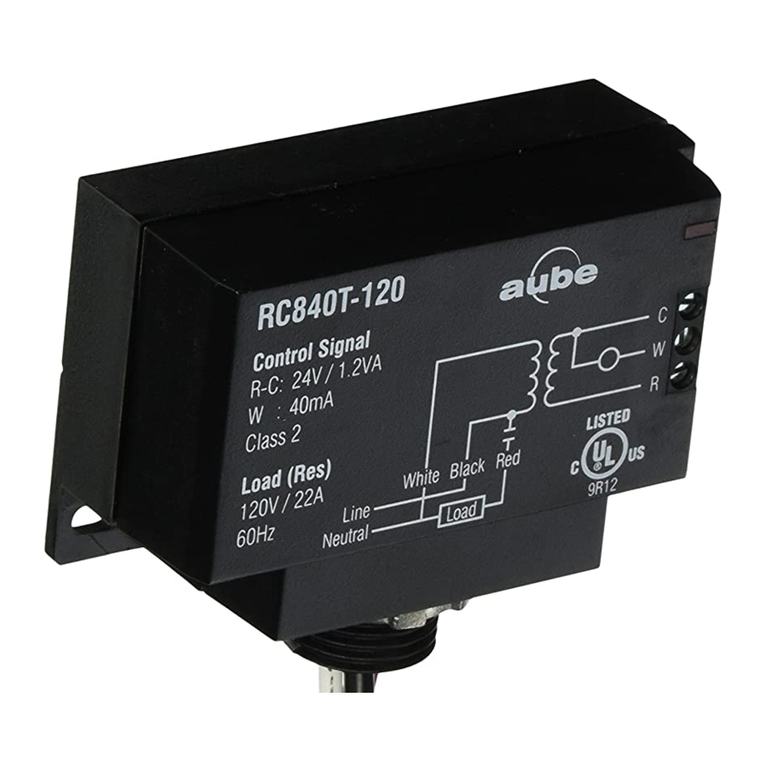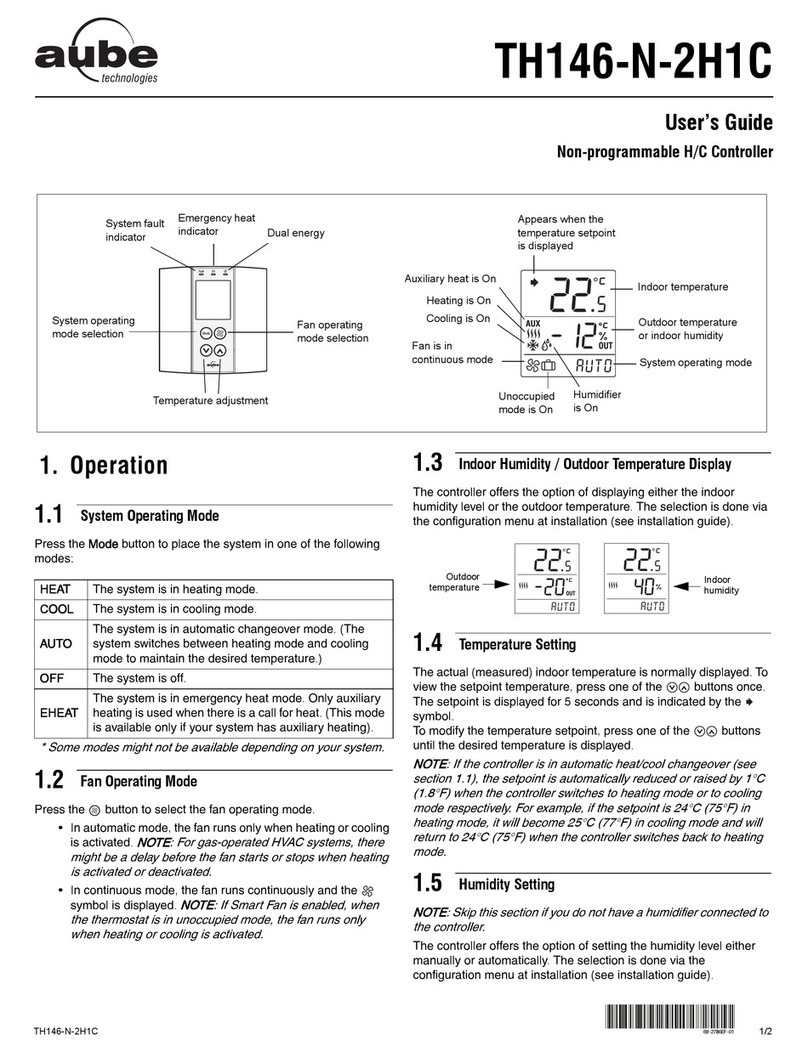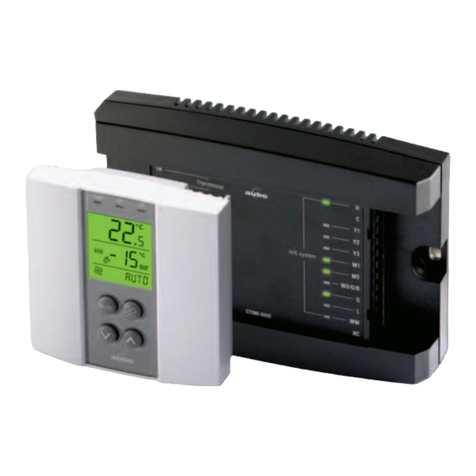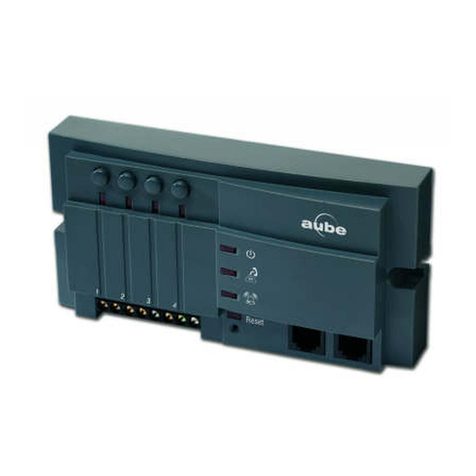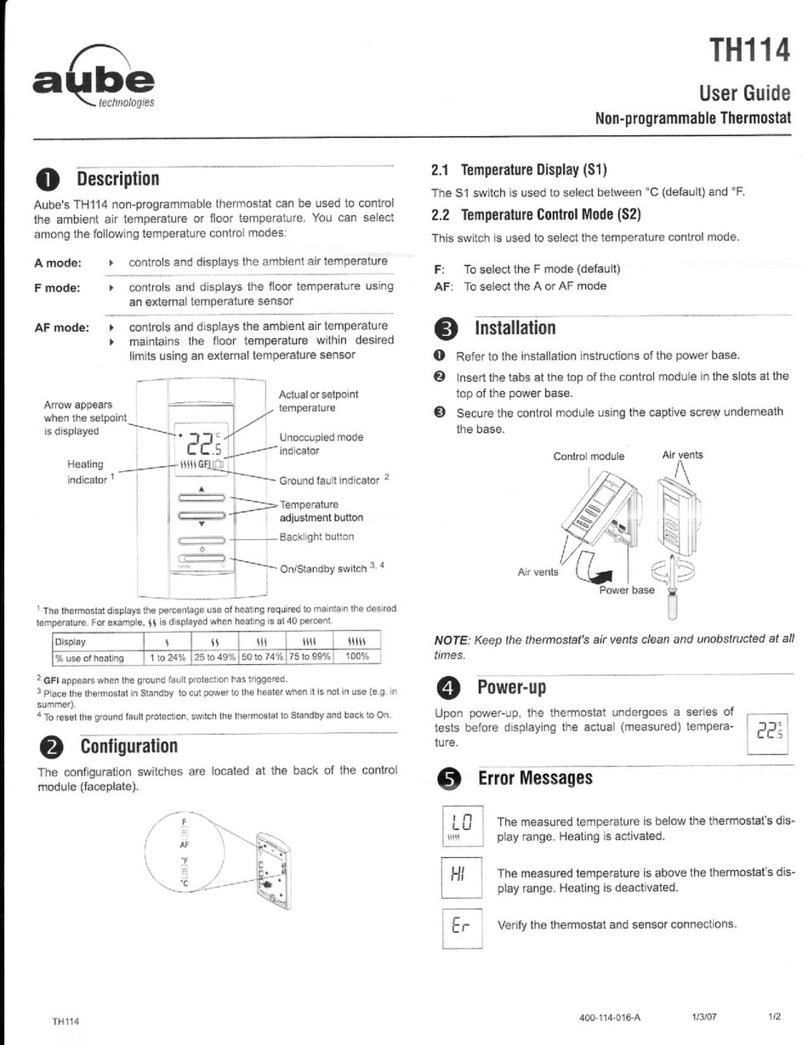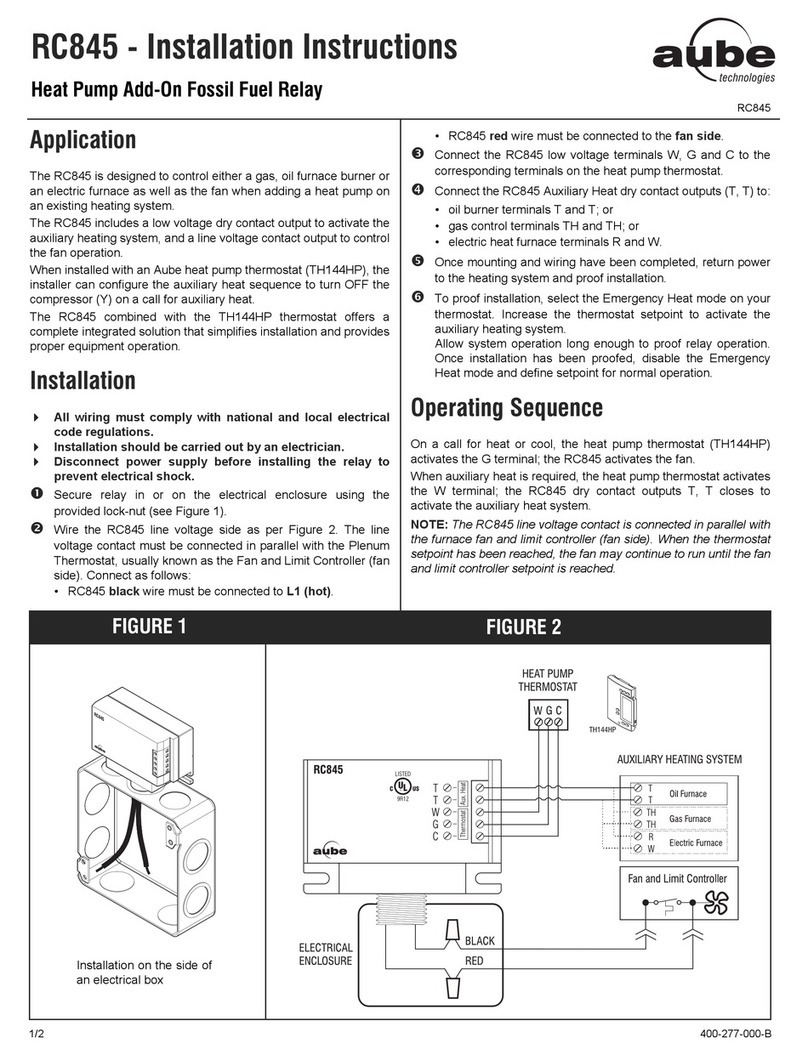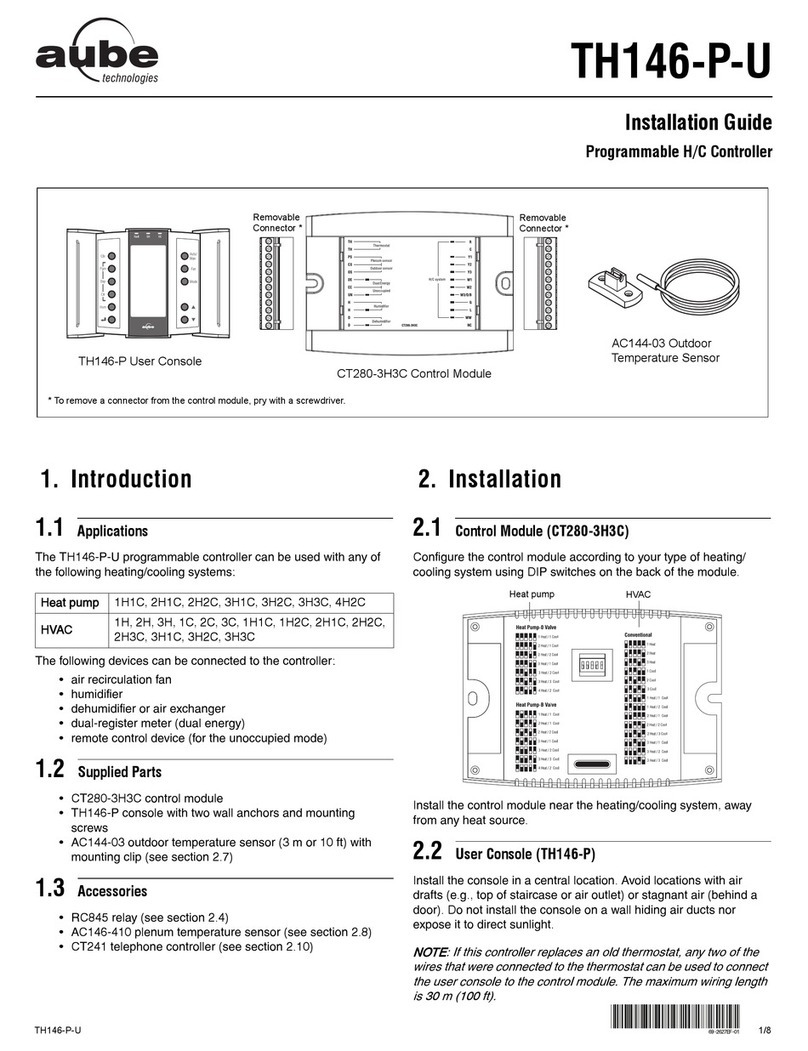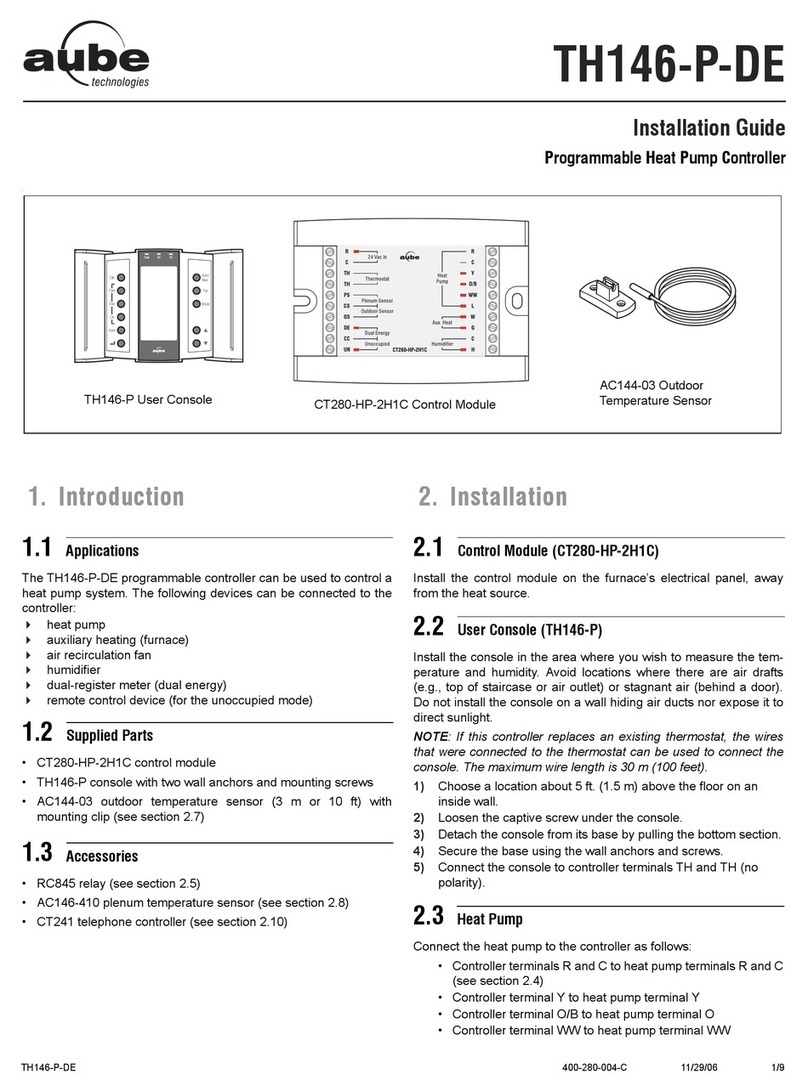
TH146-P-U 4/4
MODULE DE CONTRÔLE CT280-3H3C
Alimentation : 24 Vca
Consommation : 150 mA
Charge maximale par sortie : 1 A @ 24 Vca
Protection anti-court cycle
•Temps d’arrêt minimal: 4 minutes
•Temps de fonctionnement minimal: 2 minutes
Cycles de régulation : 2 à 6 par heure
Température de fonctionnement : 0 °C à 50 °C (32 °F à 122 °F)
Température d’entreposage : -20 °C à 50 °C (-4 °F à 122 °F)
Conditions d’humidité : 0 % à 95 % sans condensation
Dimensions : 95 mm x 137 mm x 30 mm (3,8 po x 5,4 po x 1,2 po)
CONSOLE TH146-P
Plage de réglage de la température
•Mode chauffage : 5 °C à 30 °C (40 °F à 86 °F)
•Mode climatisation : 15 °C à 40 °C (59 °F à 104 °F)
Plage de réglage d’humidité : 5 % à 60 %
Affichage de la temp. intérieure : 0 °C à 70 °C (32 °F à 158 °F)
Affichage de la temp. extérieure : -50 °C à 70 °C (-58 °F à 158 °F)
Résolution d’affichage : 0,5 °C (1 °F)
Protection de la programmation : mémoire non volatile
Température de fonctionnement : 0 °C à 50 °C (32 °F à 122 °F)
Température d’entreposage : -20 °C à 50 °C (-4 °F à 122 °F)
Conditions d’humidité : 0 % à 95 % sans condensation
Dimensions : 79 mm x 79 mm x 24 mm (3,1 po x 3,1 po x 1 po)
Honeywell garantit ce produit, à l'exception des piles, contre tout
vice de fabrication ou de matière dans la mesure où il en est fait une
utilisation et un entretien convenables, et ce, pour trois (3) ans à
partir de la date d'achat par le consommateur. En cas de
défectuosité ou de mauvais fonctionnement pendant la période de
garantie, Honeywell remplacera ou réparera le produit (au gré de
Honeywell).
Si le produit est défectueux,
(i) le retourner, accompagné d'une preuve d'achat indiquant la
date d'achat, à l’endroit où il a été acheté, ou
(ii) contacter Honeywell. Honeywell déterminera alors si le produit
doit être retourné ou si un produit de remplacement peut vous
être expédié.
La présente garantie ne couvre pas les frais de retrait ou de
réinstallation. La présente garantie ne s'appliquera pas s'il est
démontré que la défectuosité ou le mauvais fonctionnement est dû
à un endommagement du produit alors que le consommateur l'avait
en sa possession.
La responsabilité de Honeywell se limite à réparer ou à remplacer le
produit conformément aux modalités susmentionnées.
HONEYWELL N'EST EN AUCUN CAS RESPONSABLE DES
PERTES OU DOMMAGES, Y COMPRIS LES DOMMAGES
INDIRECTS OU ACCESSOIRES DÉCOULANT DIRECTEMENT
OU INDIRECTEMENT D'UNE VIOLATION QUELCONQUE D'UNE
GARANTIE, EXPRESSE OU TACITE, APPLICABLE AU PRÉSENT
PRODUIT NI DE TOUTE AUTRE DÉFECTUOSITÉ DU PRÉSENT
PRODUIT. Certaines provinces ne permettent pas l'exclusion ou la
restriction des dommages indirects et, par conséquent, la présente
restriction peut ne pas s'appliquer.
LA PRÉSENTE GARANTIE TIENT LIEU DE TOUTES LES
AUTRES GARANTIES, EXPRESSES OU TACITES, ET LES
GARANTIES DE VALEUR MARCHANDE ET DE CONFORMITÉ À
UNE FIN PARTICULIÈRE SONT PAR LES PRÉSENTES
EXCLUES APRÈS LA PÉRIODE DE TROIS ANS DE LA
PRÉSENTE GARANTIE. Certaines provinces ne permettent pas de
limiter la durée des garanties tacites et, par conséquent, la présente
limitation peut ne pas s'appliquer.
La présente garantie donne au consommateur des droits légaux
spécifiques et peut-être certains autres droits qui peuvent varier
selon la province, l’état ou la région.
705, avenue Montrichard
Saint-Jean-sur-Richelieu (Québec)
J2X 5K8
Canada
1 800 831-2823
aube.service@honeywell.com
www.aubetech.com
6.2 Paramètres de configuration
Affichage de
l’heure
•12h
•24h
Démarrage
anticipé
• On (activé) : Le chauffage ou la
climatisation démarre plus tôt afin que la
température désirée soit atteinte à l’heure
réglée.
• OF (désactivé) : Le chauffage ou la
climatisation débute à l’heure réglée.
NOTA : Le démarrage anticipé ne s’applique
que pour les périodes 1 et 3 (P1 et P3).
Lorsque cette fonction est activée, le
chauffage ou la climatisation démarre avant
les heures réglées pour P1 et P3, mais
débute aux heures réglées pour P2 et P4.
Passage
automatique à
l’heure d’hiver
et d’été
• OF (désactivé) : L’heure normale (d’hiver)
est employée toute l'année.
• 1 : Le contrôleur passe à l’heure avancée
(d’été) le premier dimanche d’avril et à
l’heure d’hiver le dernier dimanche
d’octobre.
• 2 : Le contrôleur passe à l’heure d’été le
deuxième dimanche de mars et à l’heure
d’hiver le premier dimanche de novembre.
Affichage de la
température
•°C
• °F
Ce tableau présente seulement des paramètres de configuration
acessible par l’utilisateur. Pour la liste complète de paramètres
de configuration, voir le guide d'installation.
7. Fiche technique
8. Garantie
9. Service technique
Imprimé aux É.-U. 02-2013

